After Antsirabe, the second chapter of our 2023 road trip in southern Madagascar was to take place in Morondava: the capital city of Menabe Region in the country’s central-western coast. Besides its scenic tropical beaches and cultural significance, the city is principally visited as the gateway to the world-famous, nearby natural wonder of the Avenue of Baobabs.
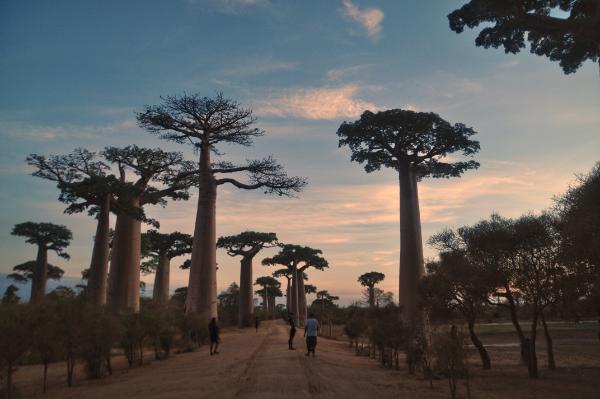
The drive to Morondava
We left our hotel in Antsirabe at 7 am, and after a quick breakfast at a local street restaurant, we started on our long—meaning looong—way down the mountains and toward the west coast of Madagascar.
The first part of the journey went through consecutive, dense villages surrounded by extensive terraced rice fields. These progressively thinned out and gave way to a vast mountainous wilderness. Smooth grassy slopes extended to every end of the horizon, interspersed with sparse groves, lonely trees, and rocky outcrops. The increasingly rare hamlets consisted of a handful of mud or wooden hovels. We wended through them, bypassing spreads of sun-drying rice and avoiding scrawny chickens that crossed the road in panic, while kids guffawed and waved at us from the shades. The road was hardly used by motorized vehicles. Bicycles and head-burdened women were more common.
At some point, below a bridge, we encountered the interesting spectacle of a large group of people—men, women, and children alike—engaged in the hard process of manual quarrying. Using some metallic poles, under the merciless sun, they were painstakingly crushing a huge rock for others to carry the produced gravel away in buckets. As soon as they noticed me over the bridge’s edge, they all stopped working and turned their heads up to wonder at the spectacle of me and pose for the camera.
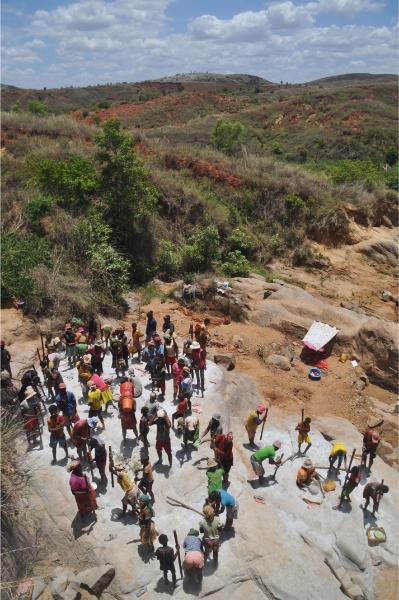
At around noon, we reached the foot of the mountains and soon stopped for lunch in Miandrivazo. This was the only settlement that could be called a town between Antsirabe and Morondava. At an elevation of 80 meters, in the midst of one of Madagascar’s most arid regions, the heat was now excruciating. After a quick meal of rice, beans, and eggs, we turned on the AC in the car and set off for the latter half of the trip.
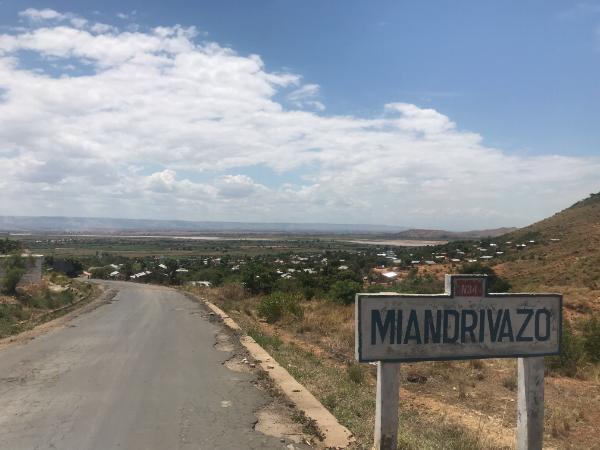
The terrain onward was mostly flat, reminiscent of a semi-desert, and intersected by great, half-dry riverbeds. Closer to the coast, the ground flattened out completely. Civilization reappeared, with villages getting denser and closer to each other the further we drove. Toward the end, while tall baobab silhouettes contrasted against the horizon right and left, the road became an endless straight line arrayed with successive shanties and traversed by a continuous flow of cars, rickshaws, bicycles, pedestrians, zebus, and goat herds. Right about dusk, after some 12 hours and 500 km of traveling, we arrived in downtown Morondava.
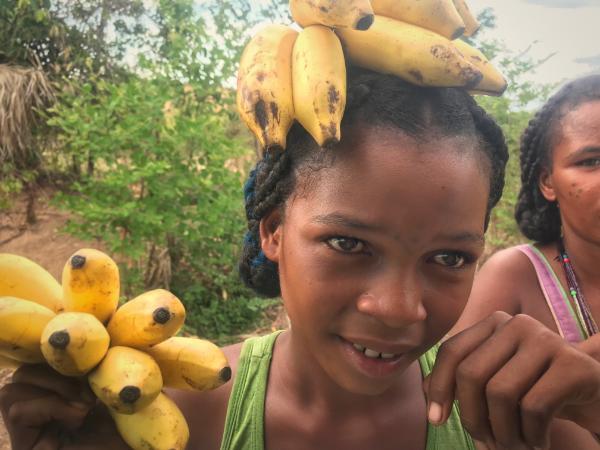
Affiliation disclosure: By purchasing goods or services via the links contained in this post, I may be earning a small commission from the seller's profit, without you being charged any extra penny. You will be thus greatly helping me to maintain and keep enriching this website. Thanks!
Accommodation in Morondava
We first tried Hotel Havana. It looked alright and was decently priced, but due to some dudes booming a huge loudspeaker across the street, which also was the main street, we decided to look for something in a quieter location. We ended up in Hotel Menabe. That was just one street behind the main street, and our balcony looked out to the main street just over a construction site in between. Anyway, I guess we couldn’t have avoided the daytime noise as long as we stayed in the center. As for the rest, the room was big and clean and comfy, the balcony was also big and had a sea view, and it was even cheaper than Havana. You can explore more accommodation options on the map below.
By the time we’d checked in and showered, calm had already befallen the previously rowdy city. Only a fat owl, perched pointedly at the corner of the roof of the school across the street from the hotel entrance, was interrupting the quiet with her rhythmic hoots when we went out. We drove to the beach and had a beer in a dingy hovel of a beach bar. Mere starlight was rendering visible the ocean foam beyond the low-tide sandbar in the distance. Then we dined in a local seafood place on the street behind the beach and went to bed ready for an early start.
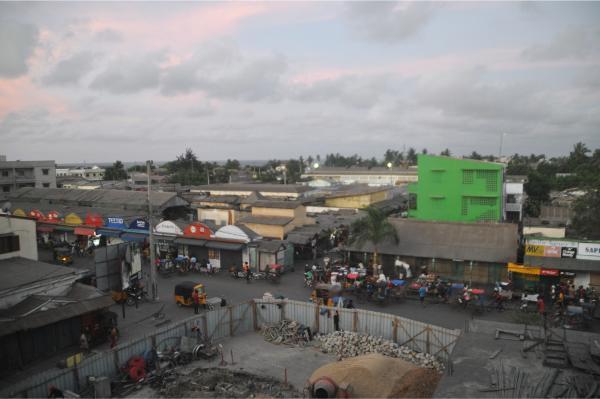
Sunrise at the Avenue of Baobabs
We were up at 4 am, left at 4:30, and after a 40-minute drive, we’d made it to the Avenue of Baobabs right in time for sunrise. We were supposed to pay only a parking fee, but it seems we were so early that nobody was around to collect it. A handful of other tourists were present, who apparently had spent the night in the camping site on the spot. Sporadic locals were already walking along the “avenue” in both directions; away from the city, carrying farming tools; and toward the city, carrying baskets of vegetables or strangulated chicken. A couple of trucks also drove by toward some unknown northern destination.
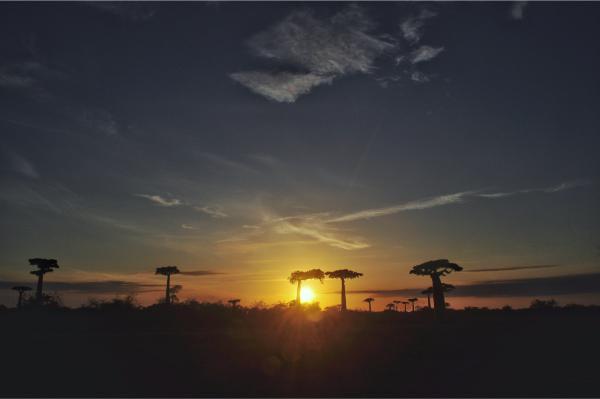
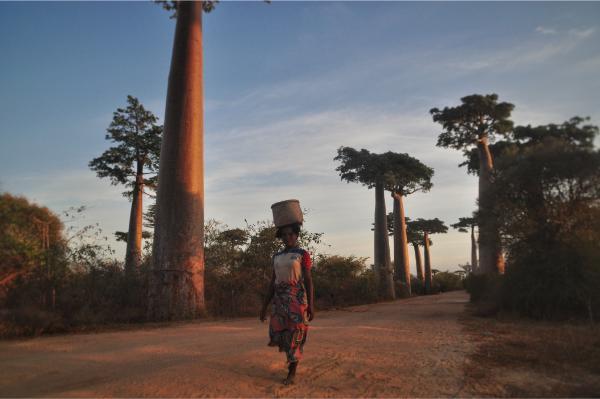
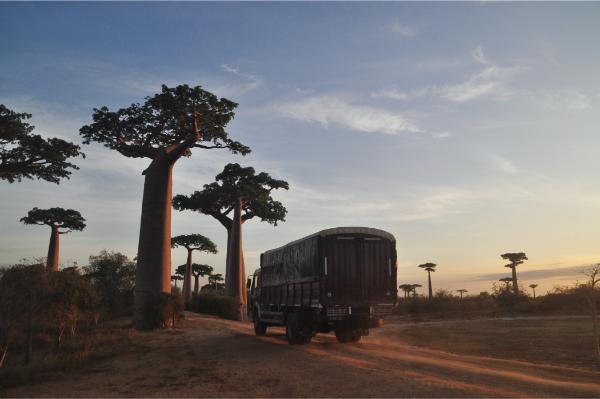
The baobabs themselves, without exaggeration, made for one of the strangest natural sights I have ever observed. Known as the giant baobab, or adansonia gradidieri among taxonomists, this species stood conspicuously apart from all his African mainland cousins that I had seen before. With their enormous, nearly perfectly cylindrical, glossy trunks soaring dominantly amid the flat desolation, they constitute a characteristic clue of what extraterrestrial vegetation could look like.
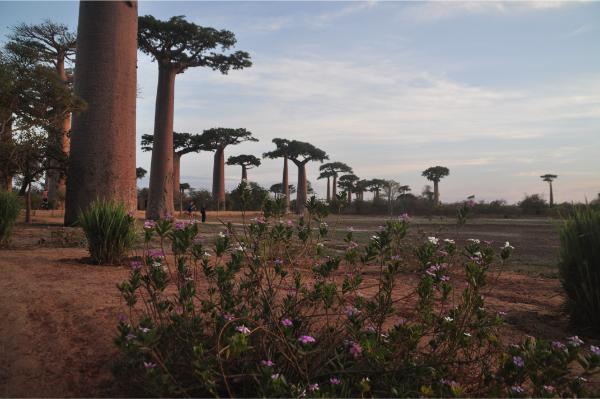
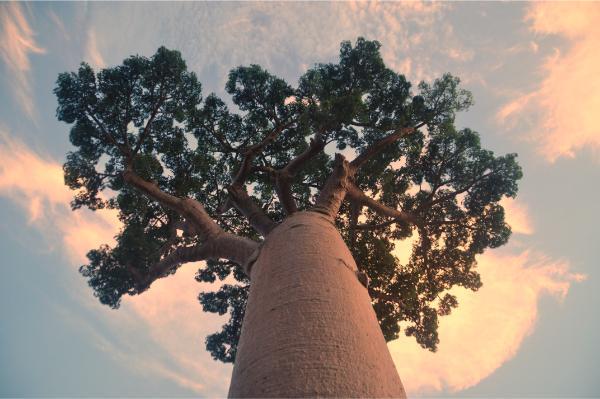
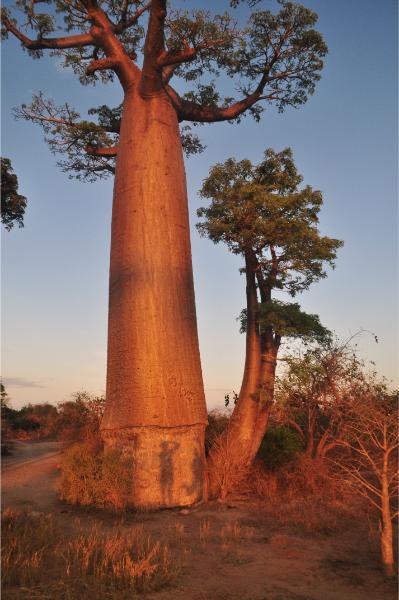
On the side of the entrance, there was a local family selling baobab fruits. On their little stall, they had whole fruits, separate nuts that you find inside the fruit, and powder of the pulp you find inside the nuts. Since we weren’t going to cook anytime soon to use the powder and we didn’t feel like experimentally finding out how to open the fruit, we got the nuts to try. These were already quite a task to eat. I nearly broke my teeth until I managed to crack the thing open in four pieces and then scoop the pulp out with a canine. They had an interesting, tangy flavor, but I wouldn’t rank them anywhere close to my favorite fruits. We eventually handed them to some begging kids on the roadside.
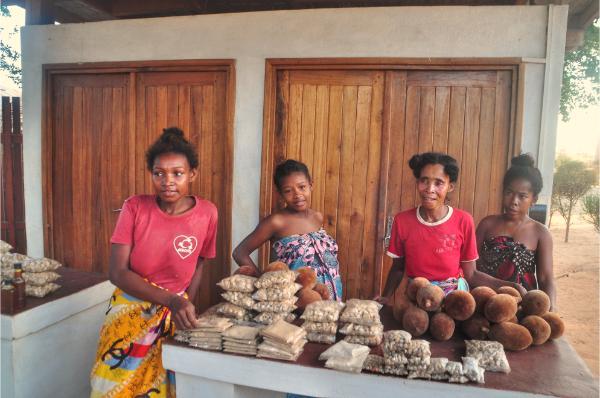
Avenue of Baobabs Photo Gallery
View (and if you want use) all my photographs from the Avenue of Baobabs.
Exploring the city and the beach of Morondava
My regular 7 am alarm rang concurrently with our parking back outside of the hotel. We had all day ahead of us to explore the city of Morondava. After a coffee and some chilling in the room, we headed out later in the morning.
The heat was already sweltering, and the sand-carpeted streets were largely bereft of motion. Many people were drowsing in the side shades, but only a few strode or pedaled along lethargically. The brininess and fishiness that pervaded the air got stronger the closer we came to the coast. Through a narrow sandy path among a cluster of wooden shacks, we stepped out to the beach of Morondava.
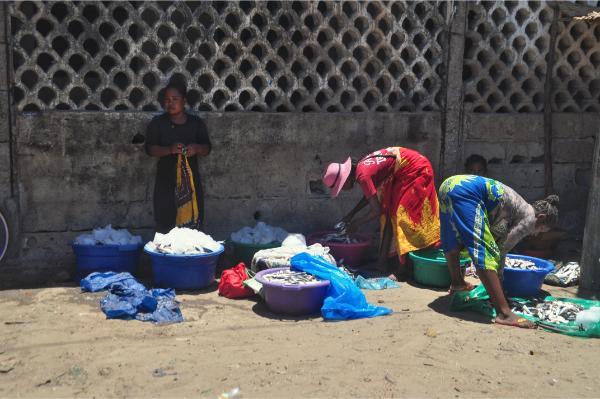
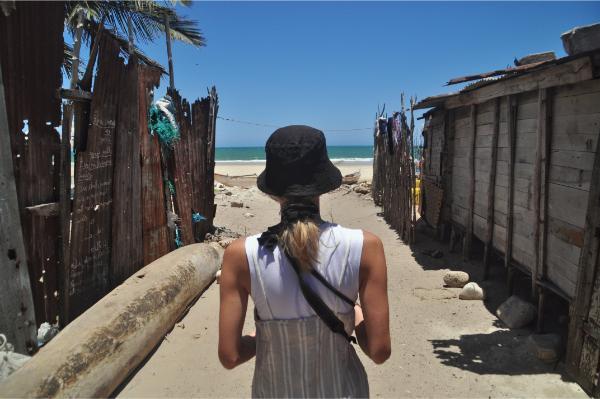
It was a vast stretch of fine white sand. The sea looked fairly clean and inviting for a dip, despite what we’d read. A constant, powerful wind swept it, forcing flurries of whipping sand granules through the air and relieving the inexorable heat. The sun, however, was burning on undeterred, and I ended up red all the same.
The beach extended far to either side. Out of the equally appealing directions, we chose to go south. Colorful pirogues lay scattered throughout the sand. Occasional women walked by with baskets of fish balanced on their heads while old men here and there prepared fishing nets. Groups of younger men were pushing boats against the waves, about to venture to the open ocean. Vibrant, full sails were visible out in the distance.
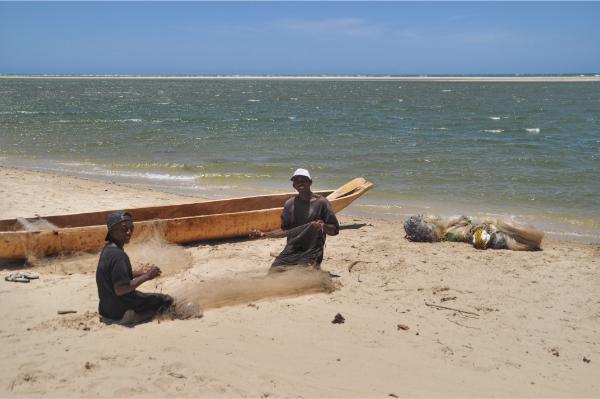
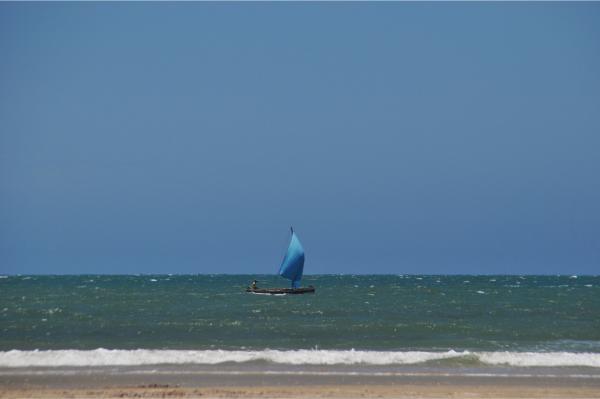
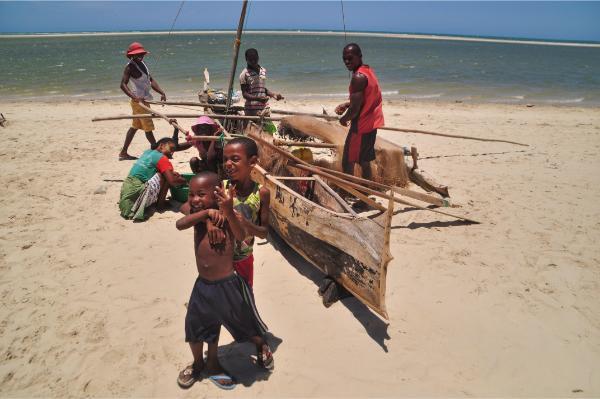
Then a lad approached us and offered to take us on a boat ride to a fishing village across the river. His name was Vouny. He spoke good French and even a bit of English. The tour would last 4 hours and cost 30,000 ariary per person. At first, I understood it was 30,000 in total and I easily accepted. Only later, during the tour, it was clarified that he’d said per person, Sophie confirming that I didn’t hear and it wasn’t a rip-off. Anyhow, for 60,000 it still was totally worth it. Vouny’s number is +261332603688.
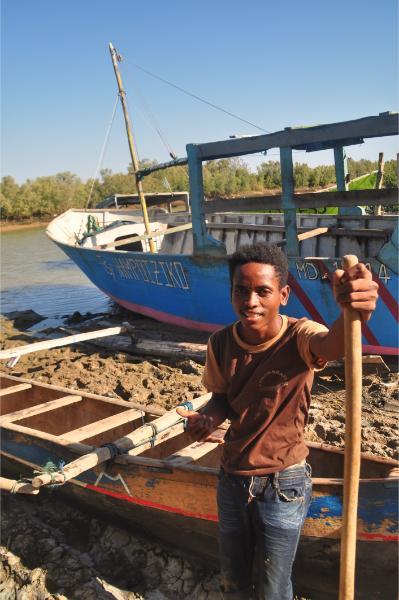
Morondava Photo Gallery
View (and if you want use) all my photographs from Morondava.
A boat tour to Betania village across Morondava
We agreed that we’d walk a little longer, go for lunch in a certain restaurant on the beach, and meet him there in about two hours. Long before we’d finished our meal, he was there waiting together with another lad he’d called along as a rowing mate. We left together, made for the road behind the beach, walked about a km toward the end of the spit that was formed between the beach and the river, and reached his pirogue. It was dry-docked inside a fenced house yard on the riverbank. An old man, who was busy washing a cloth and must have been his grandfather, looked satisfied by our arrival and the impending income that this entailed.
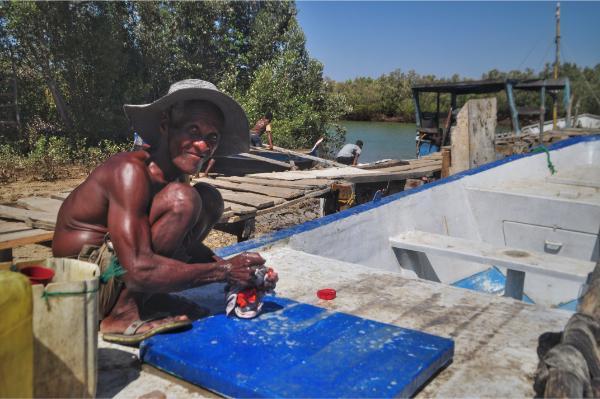
They pushed the vessel down a stretch of knee-deep muddy shore, we all hopped in, and set off. Although we were going downriver, a headwind combined with the inflowing tide rendered our advance toilsome. The lads paddled strenuously as we slowly moved along the mangrove-lined river bank. For a length near the mouth of the river, where the water was shallow enough, they hopped off and pushed on foot. As we carried on to the opposite side, local passengers of commuting motorized pirogues smiled and waved at us in exhilaration.
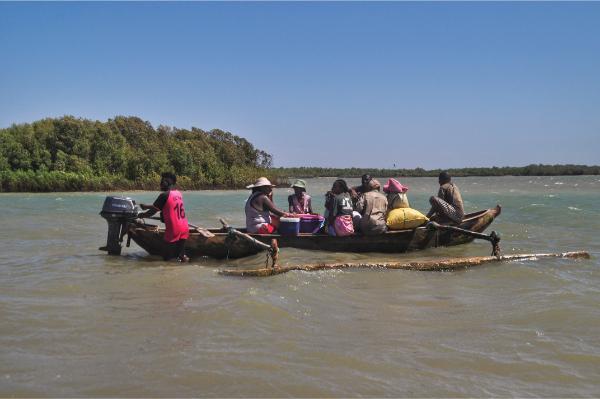
Leaving our shoes inside the boat, we jumped into the shallow sea by the opposite shore and disembarked. While his friend waited there, Vouny and we continued on foot toward the village of Betania: a rudimentary, unelectrified fishing settlement of some 500 people with one six-meter-deep well of freshwater; an unspoiled bartering economy wherein people exclusively caught fish and bred a few chickens which they exchanged for rice and maybe some candy for the kids in the city.
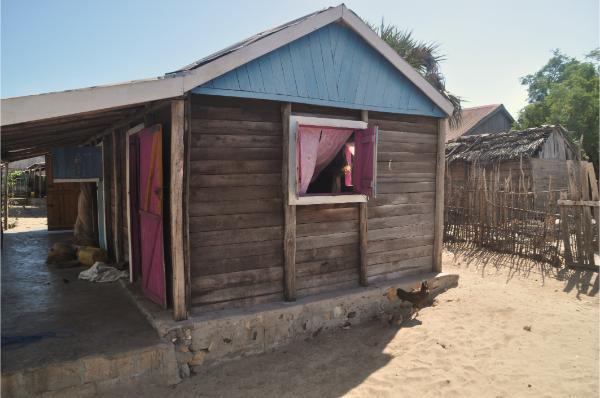
After we crossed the soggy shoal, the dry sand became too hot for our white feet to handle. So we waited in the shade of a palm for Vouny to run ahead and fetch us two pairs of flip-flops. As we approached the verge of the village, Vouny then let us know that we’d have to pay an additional fee of 20,000 ariary to the president to go in. It was alright: our small contribution to the community.
The president lived in an unassuming, poky wooden hut like all the others. I asked Vouny whether he’s president for life, to which he answered that they change presidents every five years but couldn’t quite explain by which procedure. The president was as humble as his presidential abode. He invited us in with an earnest smile and a tinge of timidity. He collected the fee and observed on in bafflement as we played with his ten or so children.
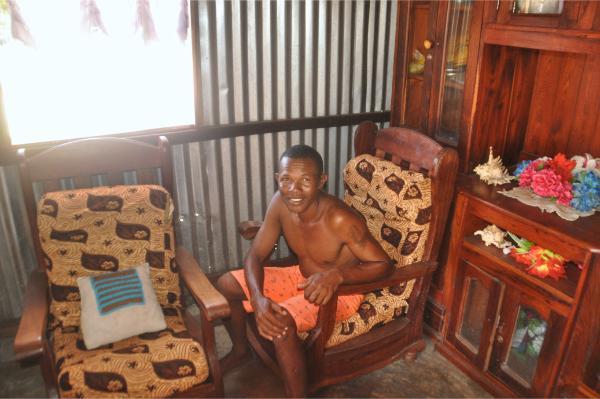
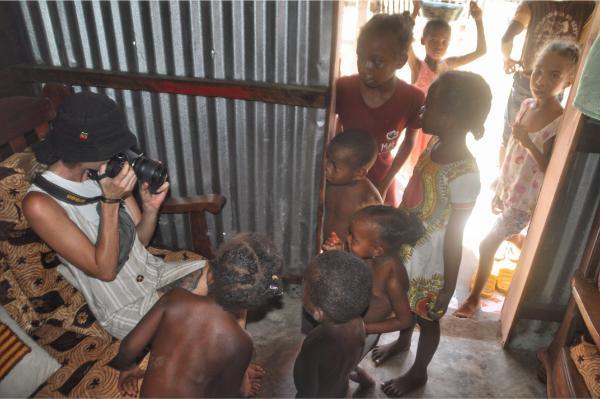
We then continued our stroll around the village. Passing-by adults didn’t at first seem very excited about our presence—I think everyone was asking Vouny to confirm that we’d paid the fee before walking away—but after we became a merry show for the village’s entire minor population, the grownups also warmed up to us.
One woman offered to plaster Sophie’s face with that sunscreen mask common throughout the region for 5,000 ariary. She accepted, and it proved a wise choice. We still had a long way back, and in the end, her face was notably less red than mine.
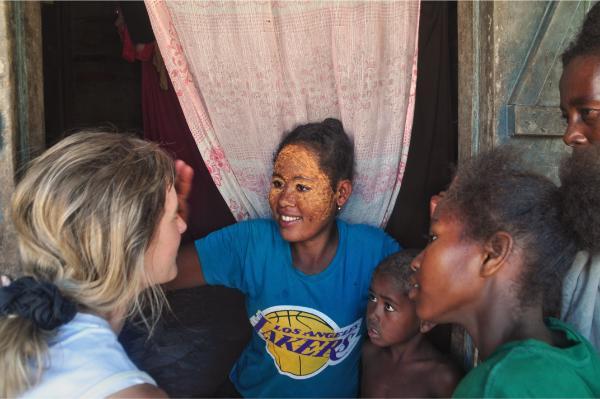
Another lad was introduced to us by Vouny as the village’s lemur. It took a while to interpret that by that was implied that he’s the guy who’ll climb up the palm and fetch coconuts for some change. We were thirsty and ordered two. He skillfully, not much unlike a lemur, scaled the tall trunk and cut two coconuts off with a machete. He then slashed them open with an axe and handed them to us.
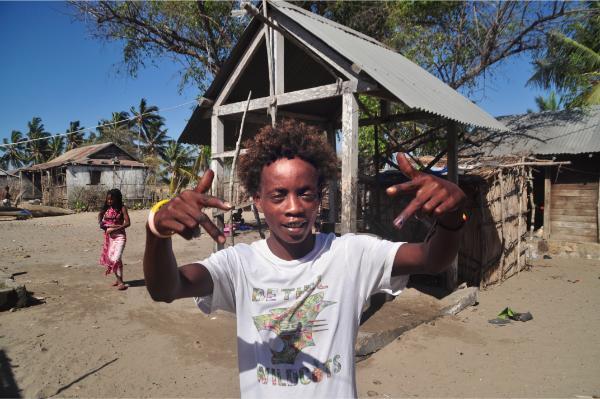
We then started on our way back to the boat. A gang of children kept bouncing along for some way, laughing their heads off and repeating “cadeau cadeau” (gift in French). They eventually left us to return home and to whatever chores they’d put aside. The president followed us all the way to the shoal because, as it turned out, he was the one who’d borrowed us his flip-flops. Another lad joined us on the boat. Of what I construed, he got a free ride to the city in exchange for his paddling. So Vouny chilled on the way back.
It was late afternoon by the time we returned home. After some rest, we had dinner at the hotel and went out with our driver for a beer at the rasta’s place. We had noticed that earlier while walking in the city. Some distance away from it, we also saw the rastaman passing by in a tuk-tuk. He stared at us and shouted out “tonight”. That was enough. It was obvious he was inviting us to his bar. It was a lovely place in a lush garden and also had rooms. We’d probably stay there if we ever were to come back. They had live music, too; a djembe, bass, and guitar band playing local traditional music rather than reggae. It was a pity we had to leave early, after just one giant beer, because an extremely long journey toward Ranomafana National Park awaited us tomorrow.
Betania Village Photo Gallery
View (and if you want use) all my photographs from Betania Village.
For this road trip we were sorted out by Patrick from MadaRentalACR. He fixed for us a flawless and comfortable 4x4 together with the driver for the most reasonable price we were able to find and he was overall very helpful and accommodating. Our driver, Tahina, was very professional and an excellent company during our two-week wandering. You may contact him on Facebook if you're looking for a trustful driver/guide in Madagascar.
Accommodation and Activities in Madagascar
Stay22 is a handy tool that lets you search for and compare stays and experiences across multiple platforms on the same neat, interactive map. Hover over the listings to see the details. Click on the top-right settings icon to adjust your preferences; switch between hotels, experiences, or restaurants; and activate clever map overlays displaying information like transit lines or concentrations of sights. Click on the Show List button for the listings to appear in a list format. Booking via this map, I will be earning a small cut of the platform's profit without you being charged any extra penny. You will be thus greatly helping me to maintain and keep enriching this website. Thanks!
